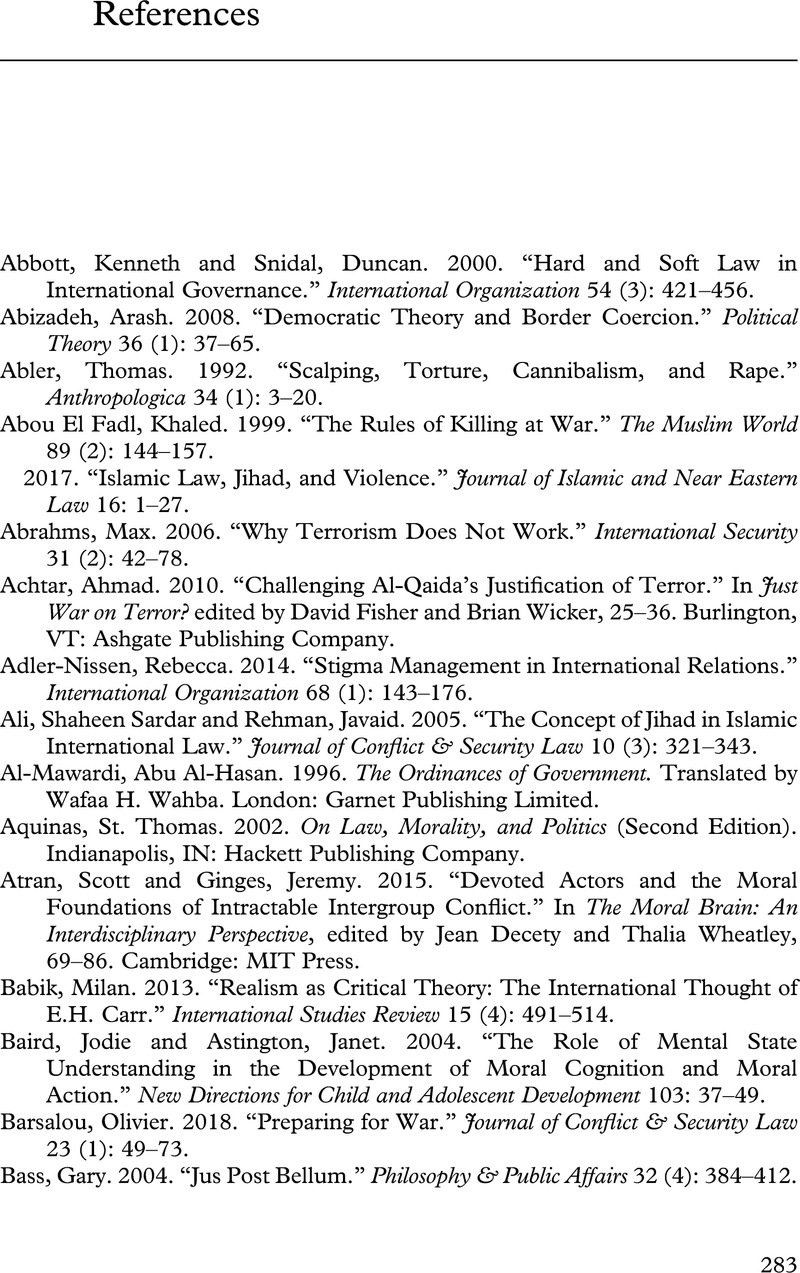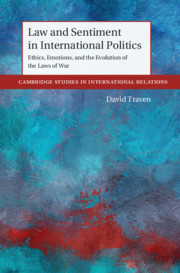Book contents
- Law and Sentiment in International Politics
- Cambridge Studies in International Relations: 155
- Law and Sentiment in International Politics
- Copyright page
- Contents
- Acknowledgments
- Epigraph
- Part I A Theory of Moral Psychology and International Norms
- Part II The Universal Grammar of the Laws of War
- Part III Moral Sentiments and the Development of International Humanitarian Law
- References
- Index
- Cambridge Studies in International Relations (continued from page ii)
- References
References
Published online by Cambridge University Press: 11 June 2021
- Law and Sentiment in International Politics
- Cambridge Studies in International Relations: 155
- Law and Sentiment in International Politics
- Copyright page
- Contents
- Acknowledgments
- Epigraph
- Part I A Theory of Moral Psychology and International Norms
- Part II The Universal Grammar of the Laws of War
- Part III Moral Sentiments and the Development of International Humanitarian Law
- References
- Index
- Cambridge Studies in International Relations (continued from page ii)
- References
Summary

- Type
- Chapter
- Information
- Law and Sentiment in International PoliticsEthics, Emotions, and the Evolution of the Laws of War, pp. 283 - 301Publisher: Cambridge University PressPrint publication year: 2021



